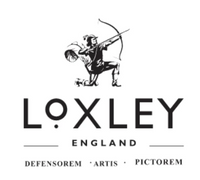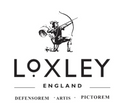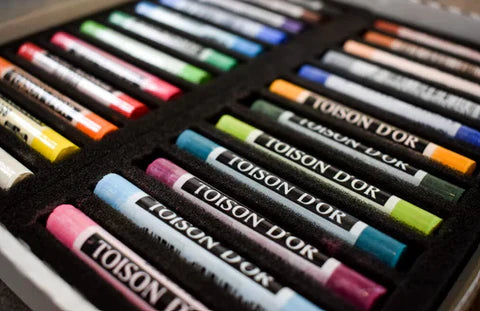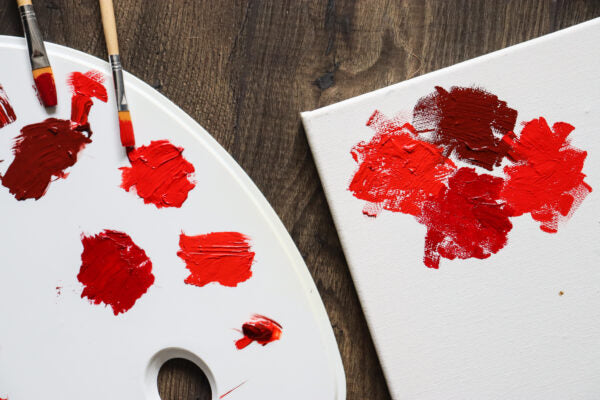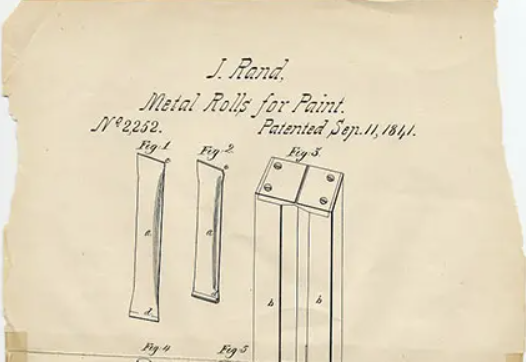Understanding Artists Copyright

Puck cartoon on the issues caused by the 19th Century lack of Copyright protection.
You may be thinking that Copyright is all about the money; maybe sharing your Art with the world is more important than the potential revenue it could earn you in the future? Or maybe you’re thinking “it’s too early in my career to take it too seriously, I’ll get my head around it when I need to”. But developing some simple habits, and a gaining a basic understanding now could save you a lot of heart ache later on. Have you considered your moral rights to your work; what if your designs were used by someone to promote an ideology that cuts right across your personal values? You have moral rights to be attributed as the originator of your work, to object to false attribution and to protect your work from derogatory treatment.
So what is Copyright? Copyright is a form of ‘intellectual property’ that gives the creator of an original work the exclusive and assignable legal rights to determine whether and under what conditions their designs may be used by others. In other words you have the sole right to determine how and where your original artwork, and any derivatives of the work, can be used. Only you can assign the right to others and you can set out clearly defined terms of usage, time limit and specified fees. Fees could obviously be a one-time payment, on-going or tied to the amount of usage, for example a percentage of revenue made.
Under the Berne Convention, copyright in artistic works lasts for the lifetime of an artist, with an additional 50 years minimum after the death of the artist. Many countries, including the UK have exceed this minimum within their national laws to 70 years.
The case is however different for engravings that were not published as at the time the artist died, and a couple of other exceptions exist. For instance, if the identity of an artist is unknown then the minimum protection starts from the publication of the work, rather than their death – Banksy, are you worried?
Generally, a person who creates the work (i.e., the author) is the first copyright owner. There are various rules applicable to where the work was created in the course of employment, and in this case the employer would be the first copyright owner unless the contract otherwise states. As most Artists are self-employed and create their works in their own time they would be the natural Copyright holder, however work produced under commission gets less clear. To provide clarity you should specify in the Commission Contract who is the Copyright holder. Remember that Copyrights are assignable, so your well-formed contract, signed by both parties will help settle this matter.
By virtue of the U.K Copyright Law, your work is deemed to be original, and by virtue of that, protected by copyright if you use your own skill, labour, judgment, and effort in the creation of your work. Artistic movements and influences are always at play, but artists add their own development and distinctive style thus adding originality.
What about different country’s legislation? Thankfully Copyright law has a long history of international co-operation, probably as a result of it being an international problem – as we see from the Puck magazine cartoon of 1886 featured at the top of this page.
The Berne convention formally set the course of International Copyright law in 1886. It has been updated a number of times to keep up with issues raised by technological advances and is now administered by the WIPO (World Intellectual Property Organization).
3 points of note about the Berne Convention:
Minimum level of protection set: The convention laid down minimum levels but individual counties can provide greater. For example the minimum years of post-humus protection for artworks is 50, but as quoted earlier, in the UK (and may other countries) it is 70 years.
No Registration needed: The principle is that work is automatically copyrighted formality-free in every Berne member state at the time it became ‘fixed’. What does ‘fixed’ mean? It means ‘embodied’, ok? Well I’m not a lawyer but I think we Artists can call it ‘done’ or ‘made’, as in, if I left it overnight it would be perceived as being the same the next day. A dance is ‘transient’ but the recording of it is ‘fixed’. There is a key difference to Art produced by USA artists; they need to formally Register their works in order to achieve full protection.
Protection of foreign Artists: Works of art produced in other countries enjoy the same rights as locally produced works, without having any formalities imposed on them. This means that an artist from the Marshall Islands (not a Berne member) could enforce copyright protection of their work in the USA, under US law, without being burdened by US formalities (such as the need to register the work).
There are some differences between the laws of member countries, particularly between the European and American nations but much harmony around the principles now exists.
Practically every country in the world is signed up to the Berne Convention (Afghanistan joined in 2018), or is held to it in some degree by other international bodies such as the WTO. We dare suggest that UK Copyrights, for visual artists worldwide are largely ‘Brexit-proof’!
It is important to know that copyright does not protect the idea themselves, but it only protects the tangible expression of the ideas. In essence, this simply means that, for instance, where a person paints a particular landscape, it does not mean that another person should be prevented from making a picture of that same landscape. However, it might be difficult to define the line between expression and ideas in a situation whereby two people take a photo of the same object.
Artworks such as paintings, graphic works, photographs, sculptures, collages, and works of artistic craftsmanship are covered by copyright. Copyrighted works are protected from being represented in any medium. This means that a sculptor cannot copy a 2-D artwork, nor a painter copy a sculpture. An exception is made for works of art that are incorporated into public spaces, or permanently on display in publically accessible buildings. In this instance, anyone is allowed to make graphical representations of it, as well as include it in photos, films or broadcasts.
A copyright owner of an artistic work has an exclusive right to communicate the work to the public by broadcasting or electronic transmission, right to lend or rent the work to the public, right to distribute and to issue copies of the work to the public, the right to reproduce and to copy the work.
A copyright owner has the right to decide whether any other person can do any of the above stated with their works.
When a person carries out any the copyright owner’s exclusive rights without the permission of the owner, then the owner’s copyright has been infringed. It could either be the whole work or a substantial part of it.
As a copyright owner, where your copyright has been infringed, you are entitled to bring proceedings against the infringer for any infringement of your copyright.
There are, however, instances where uses of artistic works are allowed without permission, but they are in very limited circumstances. In the USA these are dealt with under “Fair Use” and in the UK under “Fair Dealing” legal terminology. Examples covered by these would be broadcasting images solely for advertising it’s availability for sale, news reporting or non-commercial research. Copyright ownership should be attributed in these cases, if at all possible.
So, what about those habits I mentioned? Surely if my works are automatically copyrighted then what’s left for me to do?
Well, just because something shouldn’t be done doesn’t mean it won’t be done. Reasons people may copy are; ignorance (really?), claimed innocence and blatant arrogance. You could miss out unknowingly if you fail to spot someone copying your work and a copyright violation can be stressful and expensive in time and money. Prevention and thinking ahead can really make life easier for you down the line. Adding a Copyright notice wherever your artwork is shown (websites, printed literature and even at shows and galleries), whilst not increasing your legal rights may deter infringers. It should also serve to wrap up the argument of innocence pretty fast. Include your name and the date (or applicable date range) with the © symbol. To add the © in documents press the Ctrl + Alt keys and C, for website html code use © Don’t forget also to consider the opportunities of inviting suitable partners to approach you about licensing your work. In a 2017 study of online copyright infringements, “convenience” was given as the number one reason for illegal download and usage.
Next, think about “Who copied who?” scenarios – where two parties claim to have had the original idea first you need to establish the date when it became “fixed”. One could expect the winner to be that with the earliest provable date between the two claimants. Solicitors can date and stamp a photo of the work but obviously come at a price, whilst specialist online certifiers such as http://www.copyrighthouse.co.uk, the Fine Art Trade Guild’s Register and Tagsmart exist. A zero/low cost, alibi to your dates is better than none, here is one idea to consider: Upload photos to your social media feeds as soon as they are made and add a comment (for some reason facebook posts can be back-dated but comments can’t be). Also, if you use an online gallery such as this site (www.loxleyarts.co.uk/buy-paintings), upload the photo of the finished artwork there, then copy the painting’s page url and paste it in to the “Save Page Now” at https://archive.org/web/ – once it’s saved there the page is publicly view-able in posterity along with the date of ‘capture’. As there is no way of altering it later, it would likely serve you well in any future disputes over publication/created before date.
Pre-work studies, reference photos and the like can help prove the originality of your ideas so again consider uploading these to date-trackable sites but certainly date them, sign them and keep them on file.
Whilst the internet has ushered in new challenges for protecting copyrights, there is at least one way you can use it to police your rights; Check periodically for copiers using Reverse Image Search. One such service is provided by google; if using Chrome or Firefox 4 you can drag an image from your files on the search bar at https://images.google.com/ and it will search the net for similar. It’s difficult to know how accurate and complete this search is so infringers and forgers could still fly ‘under the radar’ however.
Should you find someone copying your work then act swiftly; collect all the evidence you can and speak to a solicitor or your local Citizens Advice Bureau, or Business Advice Centre. Either of these three are often happy to give a 20 – 30 minute appraisal of your situation and advise on the strength of your claim. The stronger your case, the more likely that an infringer will back down and seek to settle with you quickly. The action your solicitor may recommend is to write them outlining the case, requesting immediate cessation of the copying and to withdraw all copies of the work for handover or destruction. The infringer may owe you money too, if they have caused you material losses or damages. If the copied work is being shown online, you can also make a request directly to the internet service provider (ISP) to remove it themselves.
The main thrust of Copyright is to ensure that the correct originator and author can be rewarded for their creativity. In addition to upholding the value of your original paintings, licensing allows you to open up multiple and often long term streams of revenue. Licensing allows you to control many aspects of how and on what your artwork is used and when done well can increase the exposure and value of your original artwork. One of the most difficult things to decide is how much commission to agree to, demanding too much can be the proverbial killing of the golden goose yet not enough could leave you feeling exploited in the longer term. Do your research on the company and think how aligned their values are to yours. Does this association feel good for you and your personal brand? You may want to consider keeping the initial term short so that both parties can review it after, say a 1 year trial period.
It is of utmost important to have a written contract with any gallery or exhibition organizers or any person you decide to give permission to use your work.
There are organizations that can help visual artists to protect their works in the U.K such as the Association of Illustrators (AOI), Designs and Artists Copyright Society, etc.
Sources used in this article
